Nonsteroidal anti-inflammatory drugs (NSAIDs) are widely used to treat a variety of pain and inflammation conditions. They are effective because they block the production of prostaglandins, which are chemicals that contribute to pain, fever, and inflammation.
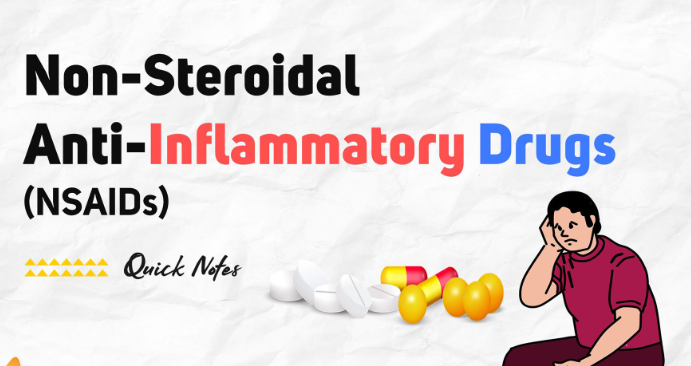
How Do NSAIDs work?
Prostaglandins are hormone-like chemicals in the body that contribute to inflammation, pain and fever by raising temperature and dilating blood vessels, which causes redness and swelling in the place they are released.
NSAIDs block a specific enzyme called cyclooxygenase (or COX) used by the body to make prostaglandins. By reducing production of prostaglandins, NSAIDs help relieve the discomfort of fever and reduce inflammation and the associated pain.
NSAIDs high-risk groups
Some people are at higher risk of developing serious complications from taking NSAIDs. Risk factors include:
- increasing age (side effects are more common in people aged 65 years and over)
- asthma
- previous or current gastrointestinal problems such as ulcers, bleeding or Helicobacter pylori infection (the germ that can cause ulcers)
- having particular heart problems (for example, heart failure), high blood pressure, diabetes or kidney disease
- drinking alcohol
- taking high doses of NSAIDs
- taking NSAIDs for more than a few days at a time
- a previous allergic reaction to NSAIDs
- taking certain other medicines while taking NSAIDs.
Tell your doctor or pharmacist if you have any of the risk factors above before buying or taking an NSAID. They can advise whether an NSAID is suitable for you and discuss your risk of side effects.
Do not take NSAIDs if you are:
- allergic to NSAIDs, including aspirin
- suffering from a gastrointestinal ulcer or bleed
- pregnant or planning a pregnancy.
Talk to your doctor if you’re unsure whether you should avoid taking NSAIDs.
Pains That NSAIDs Can Treat
Below is a detailed list of different types of pain that NSAIDs can treat:
1. Headaches
- Tension headaches: Mild to moderate pain caused by muscle tension in the head, neck, and shoulders.
- Migraines: NSAIDs are often used to relieve the pain and inflammation associated with migraines, though they are more effective when taken early in an attack.
- Cluster headaches: NSAIDs can be used for milder cluster headaches, though they are not the first choice for severe attacks.
2. Musculoskeletal Pain
- Muscle aches and pains: NSAIDs can help alleviate general muscle soreness from exercise or overuse.
- Sprains and strains: Used to reduce pain and swelling after injuries like ankle sprains, muscle strains, or ligament damage.
- Tendonitis: Inflammation of tendons, often seen in conditions like tennis elbow or rotator cuff injuries, can be managed with NSAIDs.
- Bursitis: Inflammation of the bursae (fluid-filled sacs that cushion joints), common in the shoulder, elbow, or hip.
3. Arthritis Pain
- Osteoarthritis: NSAIDs are commonly used to relieve the chronic joint pain and inflammation associated with this degenerative joint disease.
- Rheumatoid arthritis: Although disease-modifying antirheumatic drugs (DMARDs) are the primary treatment, NSAIDs help manage the pain and inflammation in the joints.
- Ankylosing spondylitis: A form of arthritis that primarily affects the spine, causing pain and stiffness. NSAIDs are the first-line treatment to manage symptoms.
4. Back Pain
- Acute back pain: NSAIDs are commonly used to treat sudden back pain caused by muscle or ligament strains, disc problems, or injury.
- Chronic back pain: For long-term lower back pain, NSAIDs can be part of a pain management plan, though long-term use should be monitored for side effects.
5. Menstrual Pain (Dysmenorrhea)
- NSAIDs are often prescribed to reduce the cramping, pain, and inflammation associated with menstrual periods. They work by reducing prostaglandins, which are elevated during menstruation and contribute to uterine contractions.
6. Dental Pain
- Toothaches: NSAIDs are commonly recommended to manage pain associated with tooth decay, infection, or injury.
- After dental procedures: NSAIDs help control pain and inflammation following dental surgeries such as tooth extraction or root canals.
7. Post-Surgical Pain
- After surgeries, NSAIDs can be used to manage mild to moderate post-operative pain, often in combination with other pain relief methods like opioids (in lower doses to reduce opioid use).
8. Pain from Bone and Joint Injuries
- Fractures: NSAIDs may be used to manage pain from broken bones, though some research suggests long-term use may impair bone healing, so their use should be closely monitored.
- Joint dislocation: Pain relief following joint dislocation (e.g., shoulder dislocation) can be managed with NSAIDs after the joint has been realigned.
9. Gout
- Acute gout flare-ups: NSAIDs are often used to reduce pain and inflammation during gout attacks when uric acid crystals accumulate in the joints, causing severe pain and swelling.
- Chronic gout: NSAIDs can be part of long-term management strategies for recurrent gout attacks.
10. Fever-Related Pain
- Fever and body aches: NSAIDs like ibuprofen reduce fever and alleviate the body aches and pains that often accompany viral infections like the flu or common cold.
11. Post-Traumatic Pain
- Bruising: NSAIDs can reduce the pain and swelling that occur after an injury resulting in a bruise.
- Trauma: Pain and inflammation following injuries such as falls, sports injuries, or accidents can be managed with NSAIDs.
12. Neuropathic Pain (Limited Effectiveness)
- Mild nerve pain: While NSAIDs are not usually the first-line treatment for nerve pain (like sciatica or diabetic neuropathy), they may provide some relief when the pain is accompanied by inflammation.
- Postherpetic neuralgia: NSAIDs may be used to manage pain and inflammation caused by the shingles virus in some patients, though other pain relief strategies are usually preferred.
13. Ear Pain
- Otitis media (middle ear infection): NSAIDs can reduce the ear pain and inflammation associated with infections, particularly in children.
- Swimmer’s ear (otitis externa): Pain and inflammation from outer ear infections can be treated with NSAIDs.
14. Tendonitis and Carpal Tunnel Syndrome
- Tendonitis: Conditions like Achilles tendonitis or tennis elbow involve inflammation of tendons, and NSAIDs help reduce pain and swelling.
- Carpal Tunnel Syndrome: NSAIDs can provide short-term relief from pain and inflammation in this condition, which affects the wrist and hand.
15. Kidney Stones
- NSAIDs are often used to relieve the sharp, severe pain caused by kidney stones while they pass through the urinary tract.
16. Pain from Cancer
- NSAIDs can help relieve mild to moderate pain in cancer patients, particularly when the pain is related to inflammation or bone metastases. However, opioids are generally preferred for severe cancer pain.
17. Bowel-Related Pain (with caution)
- Inflammatory bowel disease (IBD): NSAIDs are usually avoided in patients with Crohn’s disease or ulcerative colitis due to the risk of worsening symptoms, but in some cases, they may be cautiously used for pain relief.
- Irritable bowel syndrome (IBS): While NSAIDs may be used to relieve pain from associated cramps, they are not recommended for long-term use as they can aggravate gastrointestinal symptoms.
18. Pain from Infections
- Sinusitis: NSAIDs can reduce the facial pain and pressure associated with sinus infections.
- Sore throat: Pain and inflammation from viral or bacterial throat infections can be managed with NSAIDs.
- Urinary tract infections (UTIs): NSAIDs help alleviate the pain, discomfort, and burning sensation during urination.
19. Chest Wall Pain
- Costochondritis: This is an inflammation of the cartilage that connects a rib to the breastbone, often leading to chest pain that can be managed with NSAIDs.
20. Pain in Fibromyalgia
- NSAIDs are not the primary treatment for fibromyalgia, but they may be used to address associated musculoskeletal pain.
21. Pain from Shingles
- While antivirals are the primary treatment for shingles, NSAIDs may help alleviate pain and inflammation in milder cases.
Conclusion:
NSAIDs are versatile medications that treat a broad range of pain types, especially those related to inflammation. However, they are not suitable for all types of pain, such as certain neuropathic pain conditions, and their use should be carefully managed to avoid side effects, particularly with long-term use. Always consult a healthcare provider for the most appropriate treatment for your pain.
Pain Medications, Pain Relief, and Pain Management


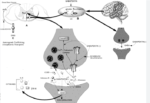
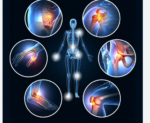
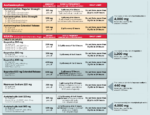

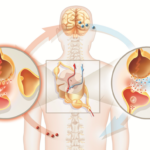

cxyzw7
3fpbhm